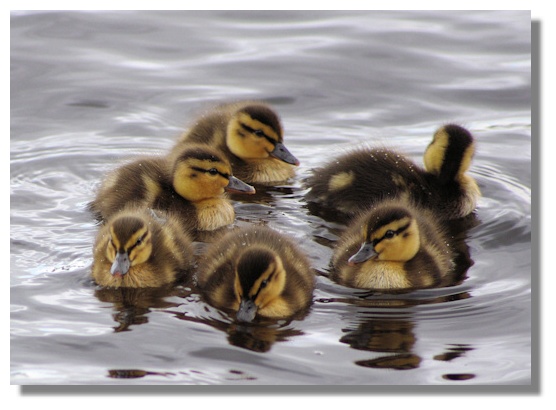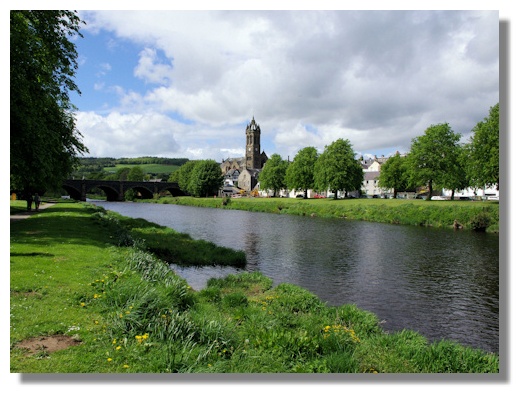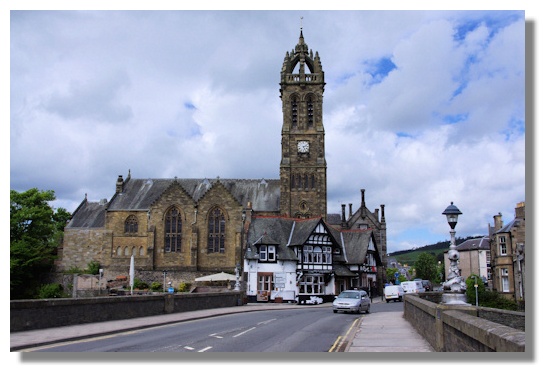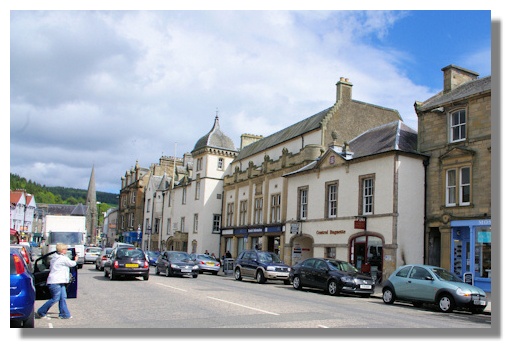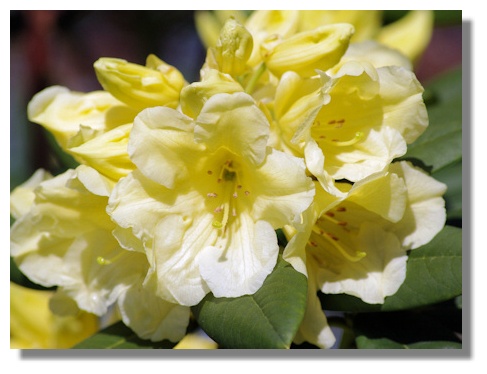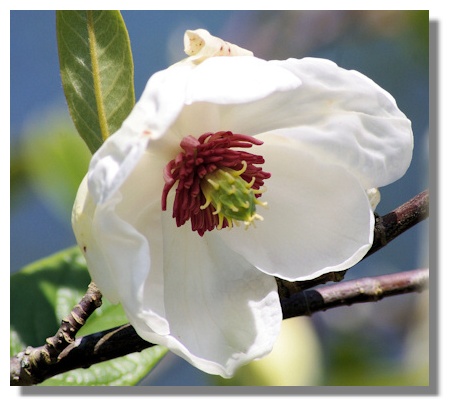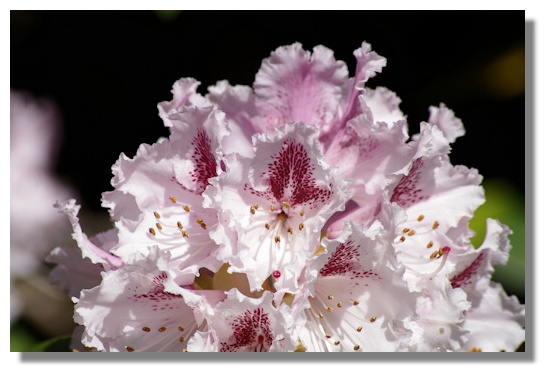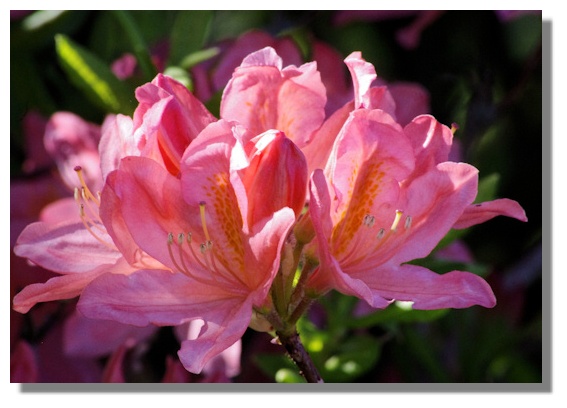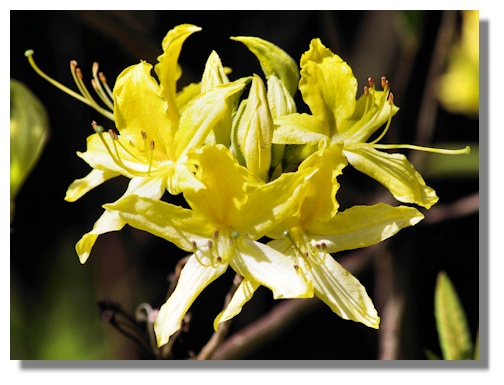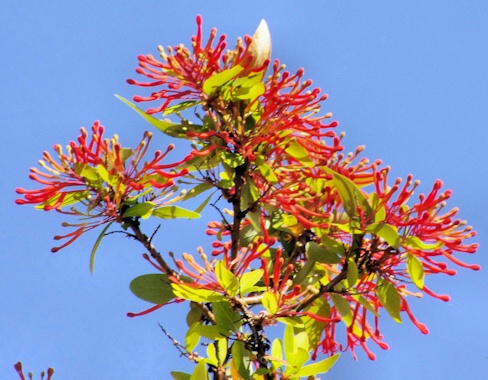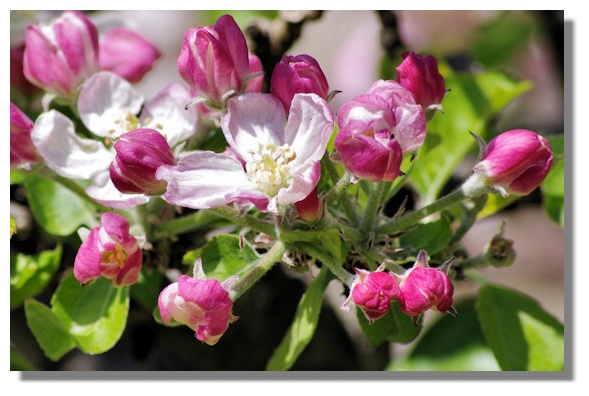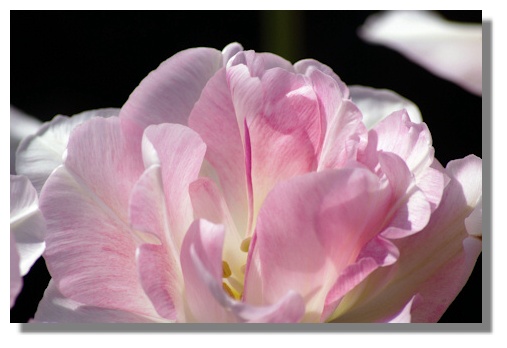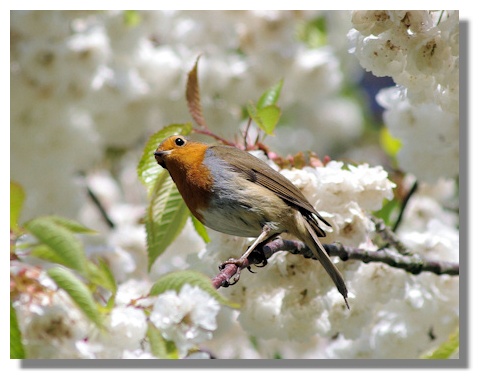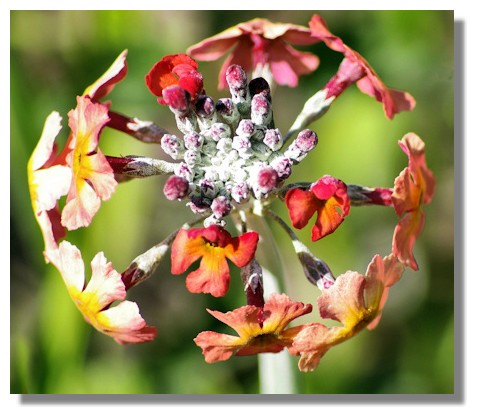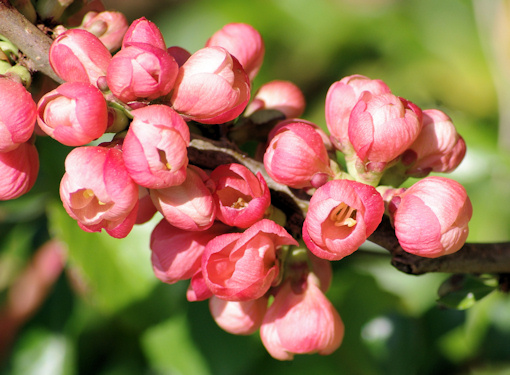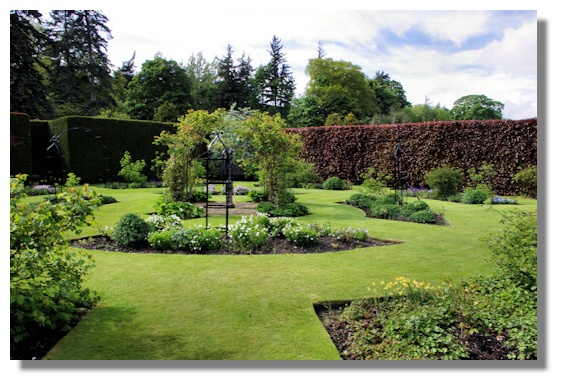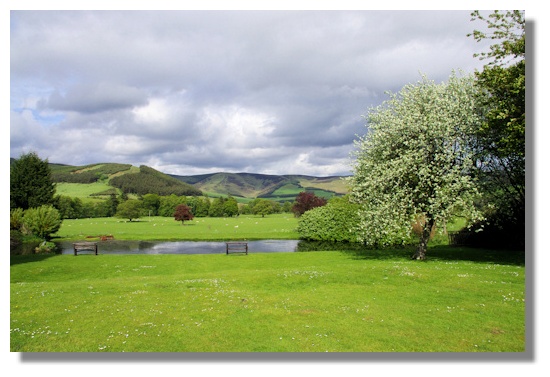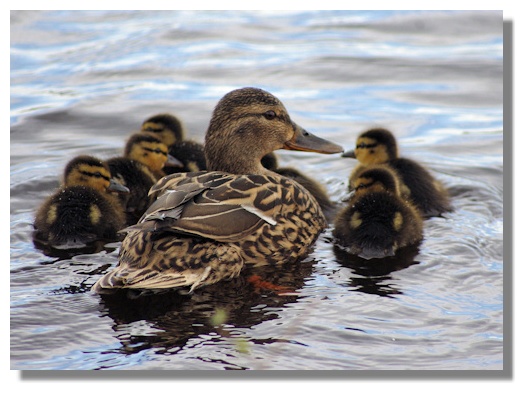Scottie's Monthly Photo Diary
- Second Half of May
Background
I never go anywhere in Scotland without my camera and I take photographs wherever I go. Sometimes I go somewhere specifically to take photographs with a view to adding another page to the Rampant Scotland site. On other occasions I just see something that makes an attractive picture or else it's another graphic to add to the library to perhaps use on a future occasion. This is a selection of the best photographs I took in the second half of May 2011 with a commentary on each one. It thus forms a pictorial diary of my travels during the month which can be shared by everyone! There's also a link to a slide show of the pictures on YouTube.
Peebles
It's a long winding road from Glasgow to the Scottish Borders but is only 23 miles from Edinburgh so it has become a town where people can work in the Capital but live in Peebles, just 45 minutes away (if they avoid the Edinburgh rush hour, that is). The town is at the confluence of the river Tweed and Eddleston Water (locally called "the Cuddy").
I doubt if the local planning authorities today would sanction an Inn to be built beside the old parish church but long ago such close proximity clearly wasn't a problem! The present church was dedicated in 1887 but includes features from an earlier Parish Church built on the site in 1784. The first Parish Church in Peebles was built back in the 600s on a site on the west side of the town. A later church was built on that same site in 1195 but was destroyed by an English army in 1548. The tower of this church still stands and is known as St Andrew's Tower.
Chambers Institution in Peebles main street is named after the publisher William Chambers who was one of the founders of what is now the Chambers Harrap publishing house of Chambers Dictionary fame. These days the building is home to the Tweeddale Museum and Gallery, a museum, library and art gallery. The local tourist information office is also located here.
Finlaystone
Finlaystone Country Estate is on the border between Inverclyde and Renfrewshire and although I have to cross the river Clyde via the Erskine Bridge to reach it, it is one of our favourite places for a walk - and for taking photos at all times of the year. In May, the rhododendrons are bursting into flower, creating a great splash of colour, especially on a sunny day. Not that we've had many sunny days this month - the weather experts tell us that this month is turning out to be the wettest May in the west of Scotland since records began - in 1910!
I think this variety of Magnolia is named magnolia sieboldii. Its flowers tend to point downwards, making it more difficult to take photographs but the one here was high on a tall bush and came within range of the telephoto lens!
I particularly like rhododendrons that have that speckled throat inside the flowers as in this large mound of trumpets with frilly edges.
Spring is also the time of year for azaleas and Finlaystone has a large number of different varieties to catch the eye. Those long stamens are just waiting for any passing bee or insect too.
Finlaystone has a large number of golden yellow azaleas as well as those in red, orange, white and various shades of pink. Some azaleas also have evergreen leaves which provides some greenery through the winter months.
Even more exotic is Embothrium which is native to southern South America, in Chile and adjacent western Argentina and southern Peru; It occurs as far south as Tierra del Fuego - so can withstand the Scottish climate! Common names include Chilean Firebush in English, and Notro, Ciruelillo, Fosforito in Chilean Spanish. They can grow to 30 to 60 feet (10–20 metres) tall.
I know this is apple blossom because later in the year large red apples can be seen growing on these branches which are trained against a wall.
In recent years the number and variety of tulips grown in the Finlaystone Country Estate has increased considerably. This delicate pink variety is one of my favourites.
I was taking some photos of the blossom on some cherry trees when I noticed a robin hopping over to have a look at me - maybe he was hoping for some food. Instead, he got his photograph taken for the album!
I often photograph candelabra primula from the side, showing the rings of flowers at different heights on its long stem. On this occasion, I looked down from above the plant, creating this merry-go-round of colour. The buds in the centre give promise of even more flowers as the season moves on.
The waxy-flowered chaenomeles is a deciduous spiny shrub, growing up to nine feet (3 metres) tall. They are native to eastern Asia in Japan, China and Korea. They are related to the Quince (Cydonia oblonga). The flowers are under an inch in diameter and are usually bright orange-red, but can be white or pink.
Kailzie
Although my trip to the Scottish Borders took in Peebles (see earlier on this page) the main reason for the journey was to call into Kailzie Gardens, a few miles further down the river Tweed. A garden was established at Kailzie as far back as 1812, but in 1962 the owner - Angela Lady Buchan-Hepburn (who still owns the property) began to develop the then wild garden into the cultivated gardens we see today. Despite the garden being 700 feet above sea level and facing north and east and being subjected to frequent frosts, even in the summer, the work has been extremely successful. If you want to see more on Kailzie, I have a Web page - Places to Visit - Kailzie Gardens.
Kailzie is only a few miles from Peebles and is set amongst the rolling hills of the Southern Uplands. As you can see, there are great views of those rounded hills. The Southern Uplands is the most southerly and least populous area of mainland Scotland. Although the summits are not as high as many in the Scottish Highlands nor other famous mountain regions, parts of the Southern Uplands are remote and mountainous, containing about 120 "Marilyns" - hills over 150 metres (500 feet).
Callistemon species are commonly referred to as bottle brushes because of their cylindrical, brush-like flowers resembling a traditional bottle brush. They originate in the more temperate regions of Australia. The most visible parts of the flower are the masses of stamens, with the pollen at the tip of the filament while the petals as such are inconspicuous. Flower heads vary in colour with most being red, but some are yellow, green, orange or white. Each flower head produces a profusion of triple-celled seed capsules around a stem which usually remain on the plant with the seeds enclosed until stimulated to open when the plant dies or fire causes the release of the seeds. They are very slow growing.
Kailzie also had a good collection of tulips at this time of year - I was particularly struck by this tinted variety with delicate "brush strokes" near its base.
Ducklings
There was a report in our weekly local newspaper about a duck which had turned up in a local loch and which had a white crest on its head - they even had a picture of it. But the news report was in their edition published on 1st April and I came to the obvious conclusion. However, two weeks later there was a follow-up report confirming that it was a Pekin Duck and it had been left at Kilmardinny Loch by a breeder when the bird's mate had died. I at once went along to the loch with my camera but there was no sign of that strange duck (see Wikipedia for a photograph. However, I had a consolation prize of these half-dozen young Mallard ducklings being shepherded by their mother.
Later that same day, I saw yet another group of Mallard ducklings at Drumpellier Country Park. They looked even younger and fluffier than the ones at Kilmardinny Loch and although the adult mallard was happy to scoop up any bread I threw in their direction, the youngsters were unsure whether the bread was edible. Being Drumpellier ducks, I'm sure they will learn very quickly!
The female Mallard sits on the eggs for nearly four weeks before they hatch. During that time, the male mallard deserts the female and has nothing more to do with tending the young. The female is very protective of her brood and will fight off other birds, including any seagulls attempting to snatch one of the youngsters from the water. Even so, unlike many other birds, she does not feed her ducklings and can even be seen competing with them for bread and other "treats"!
Slide Show
There is a slide show of all the pictures in this diary page plus those in the first half of May - see Scottish Photo Diary May 2011 on YouTube.
If you want to read the other Diary entries going back to 2009, there is an Index page.
